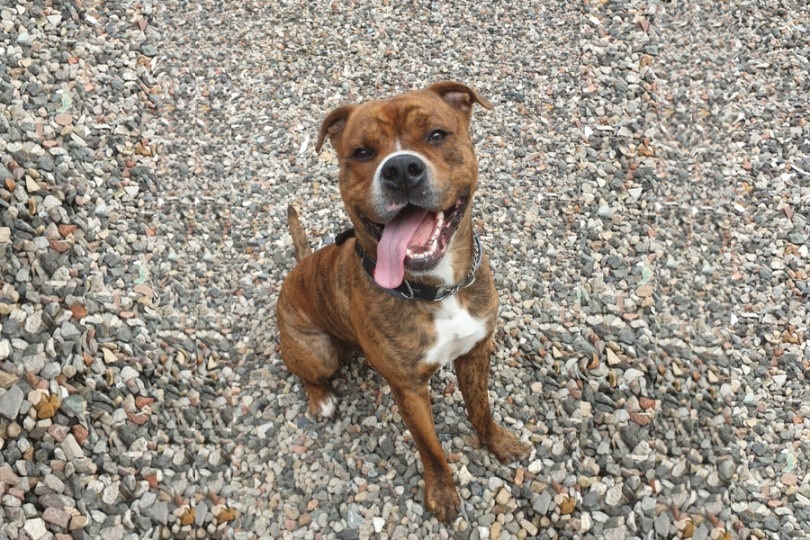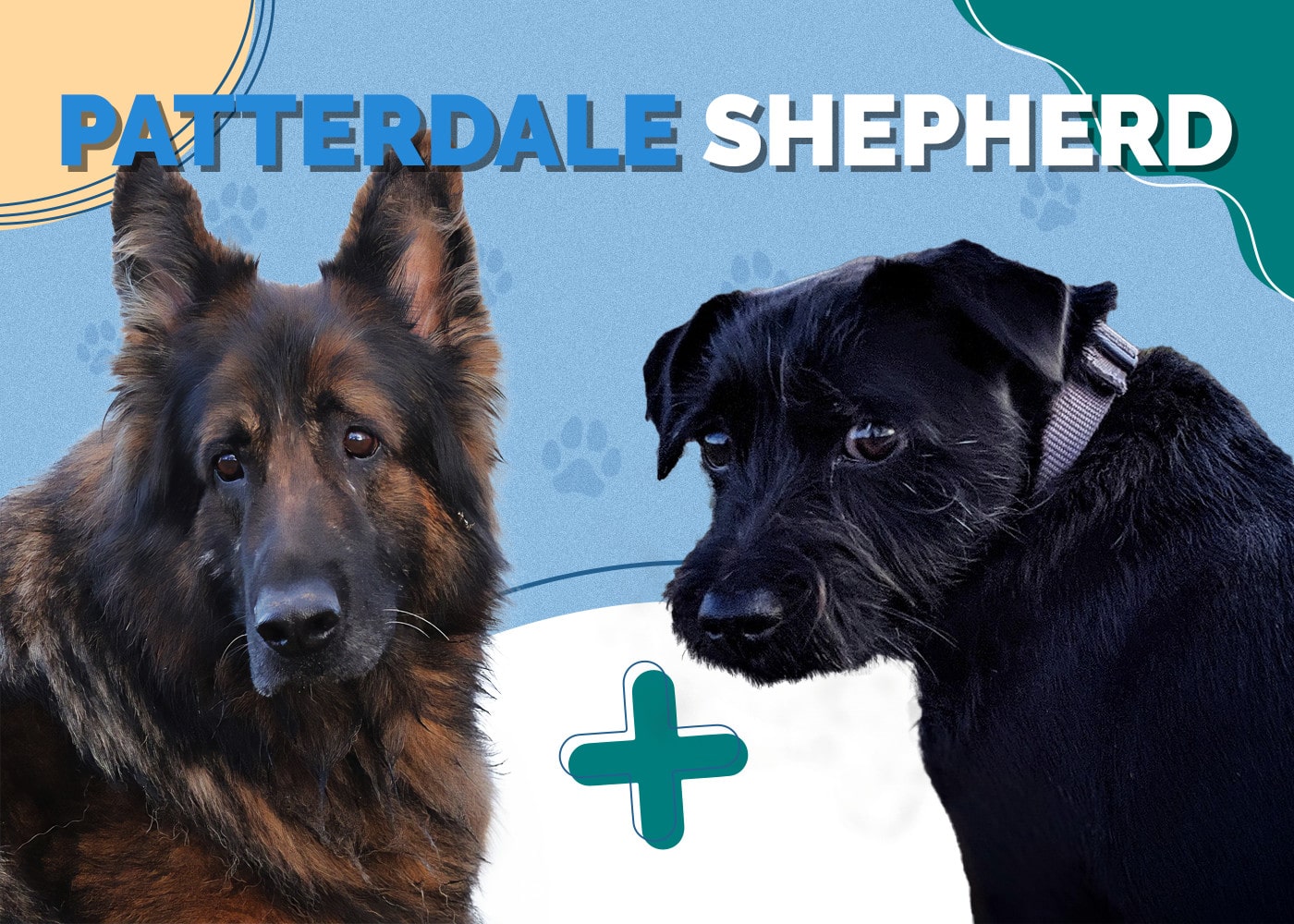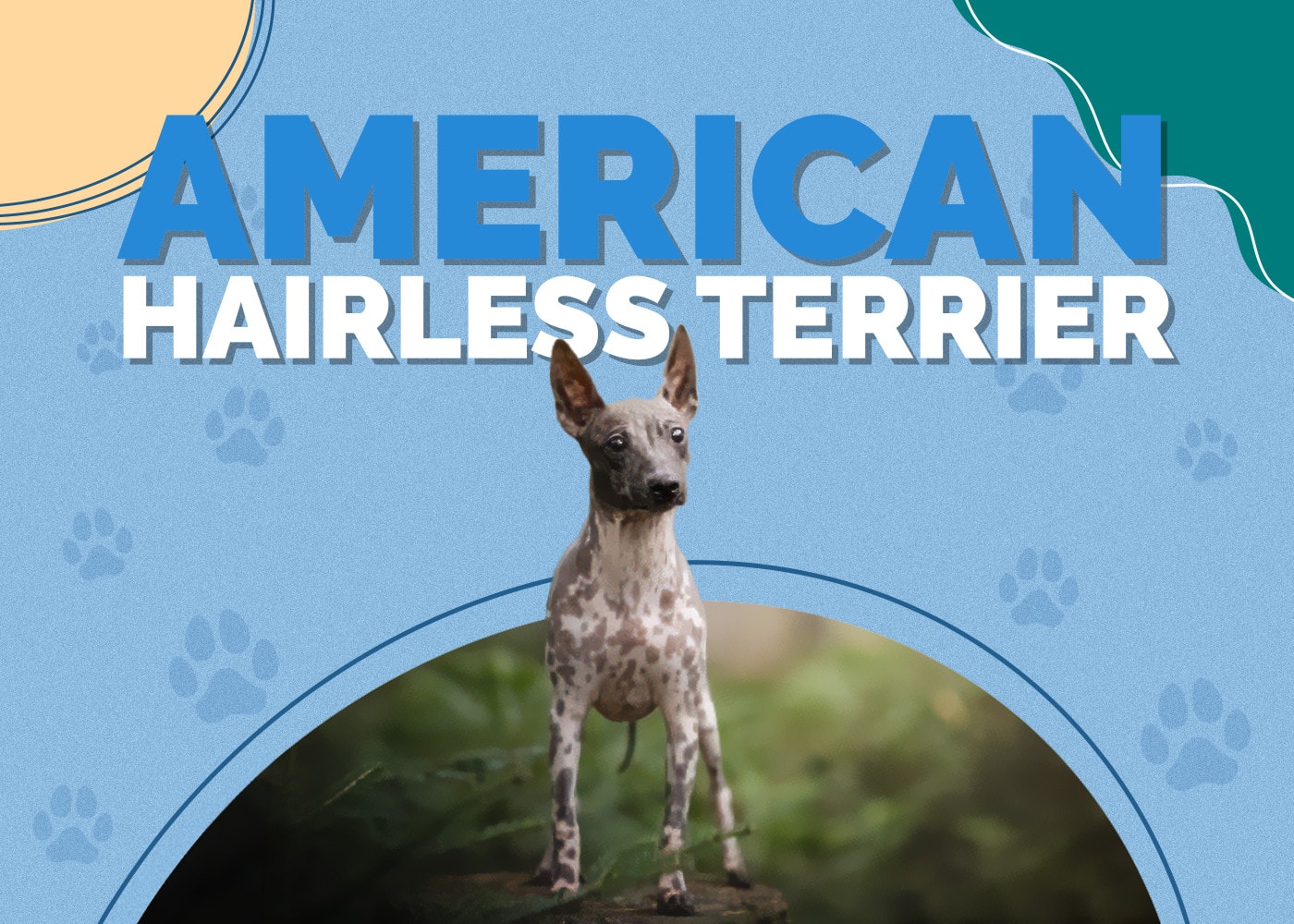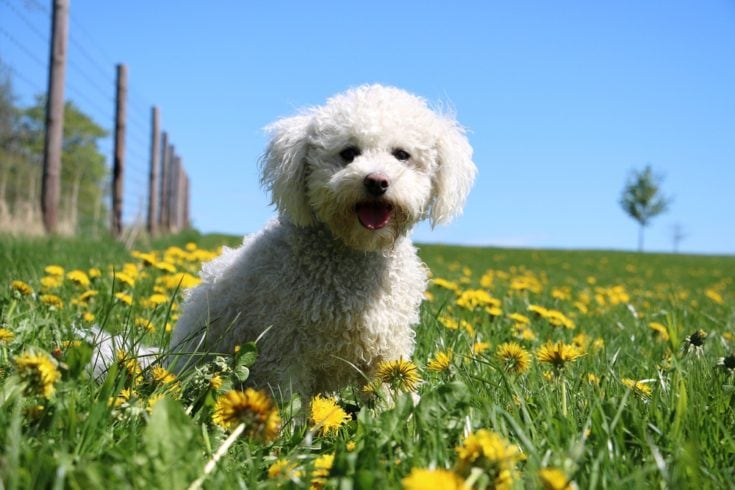English Bullweiler (English Bulldog & Rottweiler Mix): Info, Pictures, Facts

Updated on

| Height: | 18–25 inches |
| Weight: | 70–110 pounds |
| Lifespan: | 8–12 years |
| Colors: | Black, brown, tan, red, white |
| Suitable for: | Experienced dog owners looking for an energetic and affectionate dog |
| Temperament: | Loyal, loving, protective, affectionate, goofy, energetic |
The English Bullweiler is a hybrid dog breed that combines the English Bulldog with the Rottweiler. When given plenty of training and love, they will respond in kind by being an affectionate dog that dotes on their owner. They can be protective, however, and is considered a good dog for experienced owners, rather than first-timers. This is a large to giant breed, so their size, combined with high energy levels, means that they are unlikely to adapt to life in an apartment. However, if you have a yard and enjoy time outdoors, the English Bullweiler can make an excellent companion to accompany you on walks, hikes, and other physical activities.
The Bulldog was bred for bull-baiting, so their body was a combination of strength and agility. They were also quite brave. When the horrendous sport was outlawed, many breeders recognized the breed’s other positive qualities, and the Bulldog was eventually bred as a family pet. Today, they’re considered a sweet and loving family dog that can be a bit silly and has plenty of energy to play.
The Rottweiler is another breed whose use has evolved over time. They were originally bred to drive cattle and pull carts of meat. They were strong, packed full of energy and stamina, and protective. When the job of the Rottweiler was taken by the rail network, bad breeders brought the dog into disrepute. However, their reputation for being protective and loving when well-trained means that they are gaining prominence once again.
Adopting an English Bullweiler means you’ll be getting a hybrid pup with traits from both of their distinguished parents, which means they’ll likely be loving, protective, and a bit goofy!
English Bullweiler Puppies
The English Bullweiler is a rarer hybrid, and their size means that they are not one of the most popular breeds. It can be difficult to find reputable breeders, though they do not cost as much as a lot of other breeds.
Bad breeders gave Rottweilers a bad reputation. They bred the dogs for their aggressive looks and their ability to fight, and this resulted in a lot of bad press. Much work has been undertaken to undo this bad reputation, but some people are still wary of owning this type of dog. Unfortunately, bad breeders do still exist, so you need to be careful that you get your Bullweiler from a reputable source.
Conduct research on any breeder whom you are considering. While it is true that a puppy will not necessarily display the same characteristics as their parents, it is also true that bad breeders tend to keep dogs in poor condition, and this will have an effect on the dog later in life.
English Bullweilers can be tricky to train, and they grow up to be large dogs, larger than the Bulldog. As such, some examples of this breed do end up being abandoned, which means that they can be found in shelters. Adopting a rescue dog means that you should meet the dog as often as possible before taking them home. This will allow you to determine their character and temperament and should ensure you get a good dog.

Temperament & Intelligence of the English Bullweiler 🧠
The Bulldog Rottweiler mix combines two breeds that at one point or another, had a bad reputation for being aggressive dogs. This was primarily down to bad breeders and the use of the breeds for such “sports” as bull-baiting. Today, they are considered friendly and lovable dogs that are great for families and make loving companions.
Known for being fun, the Bullweiler can be a bit goofy and is described as having a good sense of humor. They are always ready to play and can brighten up your day in an instant.
They are eager to protect their family and are always alert. They will let you know of any intruders, though this does make early socialization an important facet of ownership. This will help teach them the difference between friendly and unwanted strangers, and it will ensure that they welcome visitors.
Are These Dogs Good for Families?🏡
The Bullweiler is known for being a good family dog. They are patient with children, though their size means that they will need training to ensure that they are respectful of the distance that very small children require. This is especially important because their Rottweiler parent is known as a leaner. Basically, they lean against their human companions as a sign of their love and devotion. But if they were to lean against a small child, they would knock them over and possibly hurt them.
Does This Breed Get Along With Other Pets? 🐶 😽
Besides being friendly with all of their human family members, the Bullweiler is known to be friendly with other dogs, cats, and other animals. They are inquisitive, so they will want to meet and regularly greet all of their family members, but they are incredibly respectful of smaller animals. In fact, their history as a bull-baiter means that they are more likely to be active around larger dogs and larger animals, but they won’t be intimidated even around the biggest family members, so they are a good companion to keep around horses.
Things to Know When Owning an English Bullweiler
The English Bullweiler is a great companion for any family, including those with children and with other animal family members. They are energetic and bright, though they can be a challenge to train, requiring a lot of patience. They also have a distinctive look and plenty of character. Before getting this breed, there are several factors that you should be aware of.
Food & Diet Requirements 🦴
Expect to feed your giant, energetic English Bullweiler around 4 cups of good quality dry food a day. This should be fed in two or three sittings, and you should pick up any food that is left after each meal. This breed can put on a lot of extra weight, so you do need to take care that you only feed them the desired amount and avoid leaving food around all day.
As your dog ages, they are likely to lose some of their bounding energy. At this point, their dietary requirements will also drop, and you should either move to a lower-calorie food or feed them less to stop them from getting overweight or obese.
Exercise 🐕
The Bullweiler is a very active dog. You should expect to have to provide a lot of exercise on a regular basis. They will benefit from two long walks a day and will appreciate time outdoors.
Besides being energetic, this hybrid breed can be bouncy and athletic. You should try and prevent them from jumping too high when they are young because this can cause developmental, joint, and bone problems. When they are older, however, they will enjoy agility-type classes and exercise, if you can convince them to follow the right path around the course.
If you enjoy walking, hiking, or running, the Bullweiler is the perfect companion. They will accompany you on epic journeys, and when you’re worn out and tired, they will happily keep you company and shower you with affection.
The Bullweiler is one breed that definitely benefits from having their own outdoor space. Let them run around the yard, chase a ball, and generally enjoy the outdoors.
Training 🦮
Training success will depend on whether your Bullweiler is the obedient and eager-to-please type or whether they are headstrong and independent. They are intelligent, though, so if your dog is eager to please, they will train easily. If they are headstrong, you will still be able to train them, but it will require patience, and it may take longer to teach them new commands and habits.
Early socialization should be considered an important aspect of owning this breed. Although they will naturally bond with all members of the family, they can be wary and distrustful of strangers. Socialization ensures that this doesn’t become a problem and that they will be welcoming of wanted visitors.
Grooming ✂️
This hybrid breed is considered fairly low maintenance when it comes to grooming. Although they do shed, they are not a heavy shedder, and their short hair is easy to sweep up when it does happen. Weekly brushing will help remove dead and shed hair, which prevents matting and keeps them looking their best. Their size does mean that brushing can take some time, but they will appreciate the bonding experience.
You should only bathe your Bullweiler when absolutely necessary. Too frequent bathing can strip their fur of the natural protective oils that it possesses. It will probably be challenging in any case, due to their size and potentially stubborn nature.
Brush your dog’s teeth twice a week to prevent gum and dental damage, and check that there are no gunk or mites in their ears every week. You will also need to keep your English Bullweiler’s claws in check. If you can hear them click on hard floors, it is time to get the clippers out. If you start clipping nails from a young age, your dog will respond better to the procedure when they are older. If you struggle, consult a local groomer or ask your local vet to do it for you.
Health and Conditions ❤️
The Bullweiler is generally a healthy dog, and some people believe that hybrid vigor prevents these mixed breeds from developing some of the genetic conditions that the parent breeds are prone to. That said, you will still need to keep an eye out for various health issues.
- Allergies
- Entropion
- Progressive retinal atrophy
- Hip dysplasia
- Elbow dysplasia
- Osteosarcoma
Male vs. Female
The male Bullweiler tends to grow slightly larger than the female, and many owners state that the female is easier to train and will show greater affection to their owners. However, this is mostly anecdotal, and there are just as many examples of highly affectionate males. The male is considered to be more playful and sillier than the female.
3 Little-Known Facts About the English Bullweiler
1. The English Bullweiler is not a vocal dog.
Some breeds are known for being vocal dogs, barking and whining at any noise or movement. The English Bullweiler is not such a breed. They are a quiet dog that will only really make a noise when playing or when they sense a threat to themselves or their family.
This breed also tends to make a bit of noise when sleeping, but if your Bullweiler does bark, it tends to mean that something really is up and worth investigating. This quiet nature means that some owners mistakenly believe that they are a good fit for apartment living. After all, they won’t annoy the neighbors or land you in trouble with the landlord. However, their size and their high energy requirements mean that they are only really suited to living in a house with plenty of room and ideally, with an outdoor yard where they can run around and burn off energy.
2. The Bulldog’s unique look was no accident.
The Bulldog has a very distinctive look, and there are few breeds that look similar. They were bred to be short and stocky so they would be difficult for bulls to launch into the air. Being launched led to injuries and usually meant that the dog was unable to continue the fight. They have loose skin because this trait prevented the bull from being able to latch on and allowed the dog to get away from their horns and teeth.
Even the wrinkles on their face served a purpose, channeling blood away from their eyes so they were not blinded during a fight. Thankfully, the “sport” of bull-baiting was eventually banned. While this almost led to the extinction of the bull-baiting Bulldog, the breed was eventually saved because they displayed characteristics that made them highly sought-after family pets.
3. Rottweilers are exceptional rescue dogs.
Rottweilers were originally used as Roman drover dogs and were also known as butchers’ dogs because they were used to drive cattle and pull carts filled with meat from one location to another. However, they nearly became extinct after their jobs were taken by the introduction of the railroad.
Today, they have been rebranded. They are considered friendly, playful, and loving family dogs, and their qualities make them an exceptional breed for rescue operations. They were used in New York at the Twin Towers site during the 9/11 disaster, where their tenacity, agility, and strength meant that they were highly effective at finding survivors, moving rubble, and saving people. They are also used as police dogs, service dogs, and armed forces dogs around the world because of these same qualities.
Final Thoughts
The English Bullweiler is a distinctive-looking, agile, and highly energetic dog. They are a large to giant breed, and as such, they will need an appropriately large space in which to play and live. They will require a lot of exercise, will eat just about any amount of food you put in front of them, and will quickly become a prominent and loving member of your family. They will get on with kids of any age, though training is important to ensure that they don’t bump into very small children.
Training is always important with large breeds, simply because their size means they are more prone to causing injuries and accidents than smaller breeds. Your Bullweiler is intelligent and will want to please, so they should be relatively easy to train, but they might be headstrong and a little belligerent, in which case, it will take more patience and time to train them.
The Bullweiler is a great companion dog for anyone but especially for active families that have a good amount of indoor and outdoor space and that want a companion for their adventures.
See Also:
Featured Image: Dobby-5188, Shutterstock













